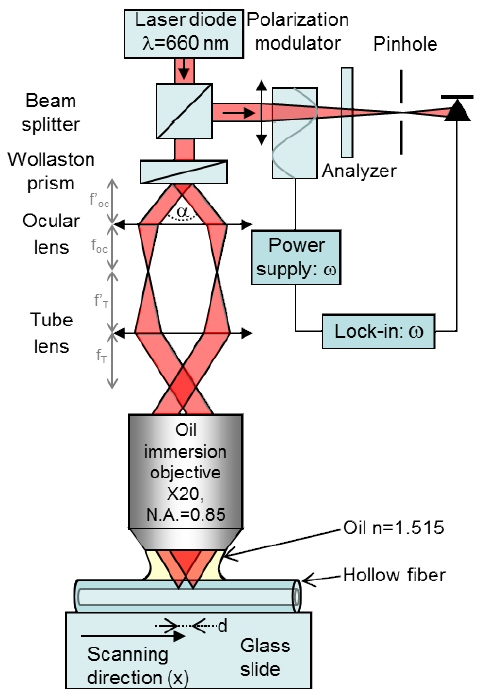Informations Contextuelles
A differential profilometry technique is adapted to the problem of measuring the roughness of hollow glass fibres by use of immersion objectives and index-matching liquid. The technique can achieve picometer level sensitivity. Cross validation with AFM measurements is obtained through use of vitreous silica step calibration samples. Measurements on the inner surfaces of fibre-sized glass capillaries drawn from high purity suprasil F300 tubes show a sub-nanometer roughness, and the roughness power spectrum measured in the range [5·10^(-3) µm^(-1) - 10^(-1) µm^(-1)] is consistent with the description of the glass surface as a superposition of frozen capillary waves. The surface roughness spectrum of two capillary tubes of differing compositions can be quantitatively distinguished.C Brun,X Buet,B Bresson, MS Capelle, M Ciccotti, A Ghomari, P Lecomte,JP Roger, MN Petrovich, F Poletti, DJ Richardson, D Vandembroucq,and G Tessier, 2014.
Picometer-scale surface roughness measurements inside hollow glass fibres, Optics Express, 22[24], 29554-67.



